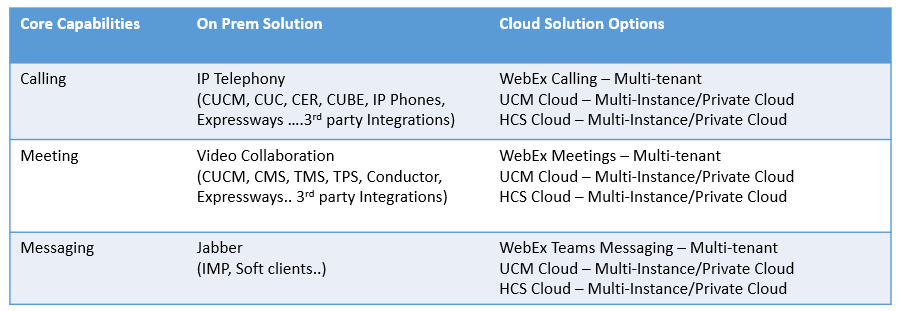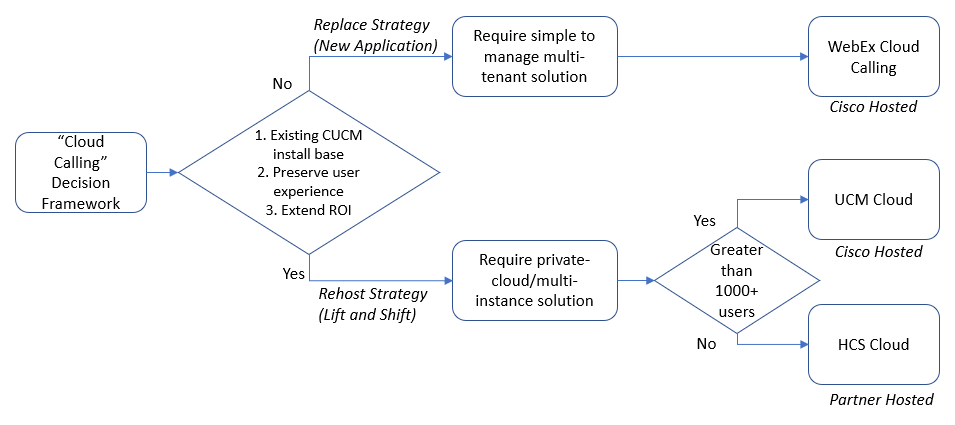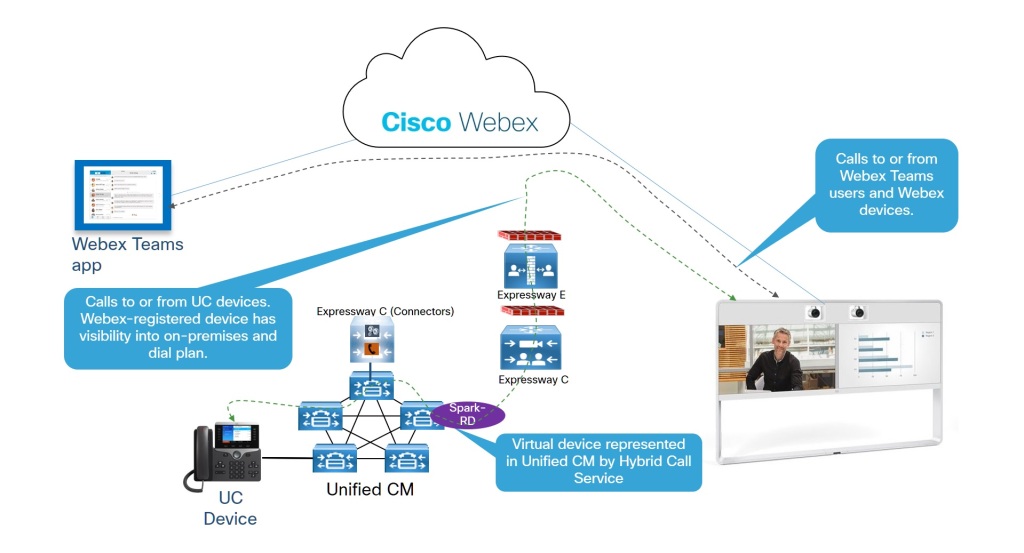Its been over 20 years since Cisco integrated VoIP technology into the data networks which benefited businesses all around the world through immense cost savings. I assume that the businesses back then didn’t need any TCO or ROI justifications to switch from TDM to VoIP solution as the benefits greatly outweighed the costs. Fast forward 20 years, Cisco today offers enterprise communication and collaboration solution across 3 distinct core capabilities which are Calling, Meeting and Messaging. These capabilities are offered through a combination of on-prem, hybrid and cloud deployment models to suit various customer requirements.
Different cloud options to fit business and operational needs
Figure 1 below represents different cloud options for each core capabilities. Its Important to note that all 3 clouds (WebEx, UCM and HCS ) offers all the 3 core capabilities and the selection of the right cloud should be based on each customer situation and requirements. So If the cloud is the ultimate destination to consume Collaboration services just like any other SaaS, what should be the steps to get there ?

Everybody’s journey to cloud is different and unique depending on how fast or slow they want to traverse, features they want to retain when they migrate to cloud, regulatory and compliance requirements, etc. Figure 2 below shows the decision framework with an example of how a business with on-premise calling solution can go about deciding the right cloud to serve their future collaboration needs.

The outcome from the above decision framework doesn’t have to lead to pivoting on one type of cloud only, but in-fact it can be a combination of cloud options to meet requirements of global corporations.
Cloud Interoperability – Mix and Match
Hybrid solution provides tight level of interoperability between these cloud environments. For example, If you pivot on UCM cloud, you can still add-on WebEx Teams messaging and WebEx meetings into your capability mix. This is achieved through hybrid solutions where WebEx Teams soft clients registers to the CUCM and gets visibility into the CUCM dial-plan. This means that the WebEx teams soft clients gets the same calling capability like your IP phones. Figure 3 below shows call flows between WebEx Teams App and the IP Phones.
Hybrid cloud Collaboration solutions was created:
- To provide Interoperability between on-premise and cloud systems,
- Use additional capacity from the cloud if on-premise systems runs of resources,
- Leverage Artificial Intelligence (AI) and advanced application capabilities from the cloud
- Finally it servers as an Intermediate stage for customers who wants both on-premise and cloud environment to co-exist until they go full cloud.

In part 2, I will discuss a scenario which provide insights on migrating on-premise Meeting solution to the WebEx cloud.

Leave a comment